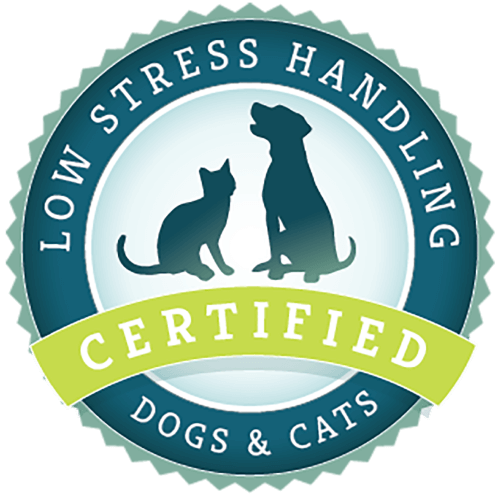What article are you looking for?
Category: I am a Veterinary Professional
Fear and Fear-related Aggression in Dogs
What is Fear? Fear is a natural emotion that causes an animal to avoid situations and activities that may be dangerous. What or who the pet perceives to be dangerous may not be the same as the person’s perception, and can be independent of actual bodily risk. However, pets act on what they perceive. What is Anxiety? Anxiety is the anticipation of future danger that may be unknown, imagined, or real. It can result in the body responding as it does when the animal is afraid. What is Stress? Stress is the body’s physiologic response triggered by anxiety and fear.
Applying Eye Drops with Low Stress Handling™
At some point in many dogs’ lives, they will require eye drops. This might be a one-time event to examine the eye or it may be multiple times per day to treat chronic disease. Regardless of the cause, applying eyedrops need not be a struggle for you or the pet, whether at home or in a clinic setting. The same approach works in both places. Gather everything you need: A comfortable place for you and the pet. For small pets this might be on a table, on a chair, or even on your lap if the pet is comfortable there.
The Eating of Feces (Poop): Coprophagia
Many see their dogs as part of the family, their “fur babies.” Our dogs eat from our plates, sleep in our beds, and even lick the baby’s face — which is why we get concerned when these same dogs go out and eat their own or another animal’s feces (poop) in the yard. The technical term for this behavior is coprophagia. Why do they eat feces? The mystery is still unsolved. Some wonder if it is due to age since many feces eaters are puppies or young adult dogs and others wonder if it is due to poor diet. Could
How to Apply Flea & Tick Prevention to Even the Most Wiggly Dogs
Many dogs don’t enjoy having topical parasite (flea and tick) control medications applied. Even though these medications aren’t painful, like an injection, the dogs may not like the feeling of something wet on their skin or the smell. Some dogs just don’t like having to stay still. The easiest way to get past these obstacles without having to run through the house chasing your dog with a tube of medication in your hand, is to give your dog something else to do while you apply the medication. Ivan is given the choice of a couple of his favorite treats: spray
Medication Station
Step 2: Bring that mat out every day twice a day and place it in a central location. You can use an elevated surface like a washer, dryer, or counter. We choose the floor because our cat has arthritis. Step 2 Step 3: Reinforce your cat for choosing to interact with the mat. You can use a clicker for this and a high value treat. You may have to start by clicking and treating your cat when they look at the mat, then when they step on the mat, then when they sit on the mat. If you are
CattleDog Publishing joins the VIN Family
Since the untimely death of Dr. Sophia Yin in 2014, her work and publishing company, CattleDog Publishing, has continued under the ownership of her trust. This has been accomplished thanks to the hardworking CattleDog staff and the guidance of her friend and colleague Dr. Sally Foote. This year, CattleDog Publishing shifts from Sophia’s trust to a permanent ownership. The Veterinary Information Network (VIN), an online community and content resource for veterinarians, by veterinarians, and the VIN Foundation, a 501(c)(3) non-profit providing resources to help veterinarians thrive, have joined to take on the stewardship of Sophia’s legacy as

Low Stress Handling® Silver-Level Certification
Individual Certification at this level demonstrates to clients and employers the individual’s dedicated interest in Low Stress Handling®. Hospital Certification at this level demonstrates to clients and staff the hospital’s commitment to appropriately training staff in Low Stress Handling® methods.
Learn More
